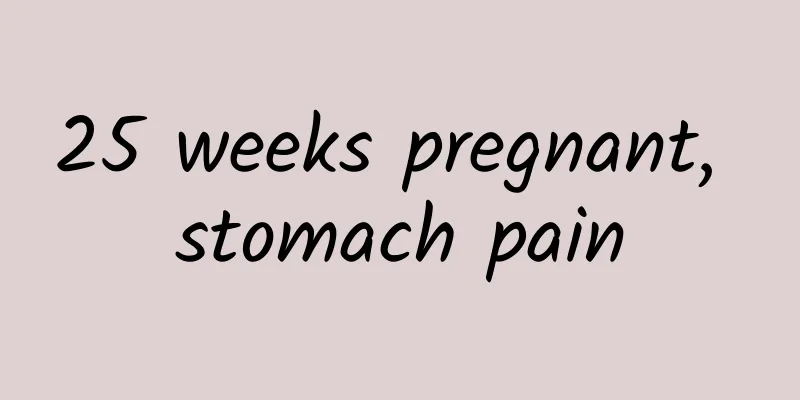What are the signs and symptoms of anxiety disorders?

|
Although society has progressed, people's life and work pressures have also increased. Some people have developed anxiety disorders due to long-term and enormous pressure, which has caused a qualitative change in their originally normal lives. So, what are the signs and symptoms of anxiety disorder? 1. Pointing to the future This kind of anxious emotion is future-oriented, which means that there is danger or threat in this emotion, that is, it is an emotion that will happen immediately or soon. People with this disease often have some unnecessary worries, which is one of their most typical symptoms. Sometimes they worry about their loved ones, their property, their health, etc., but these situations are very normal in the eyes of normal people. So this is the difference between people with anxiety disorders and normal people. Generally, there are always some deviations and errors in the actual situation. 2. Emotional state Anxiety is an emotional state. The patient's basic inner experience is fear, such as being nervous, uneasy, or even extremely panic or terror. Paroxysmal or persistent occurrence of inexplicable fear, tension, anxiety, phobia, and uneasiness. The patient may have an anticipatory sense of danger, a sense that some kind of disaster is about to happen, or even a sense of death. Many patients also suffer from depressive symptoms and lack confidence and interest in their current and future lives. Sometimes I become emotional and lose my balance, often get angry for no reason, quarrel with family members, and am dissatisfied with everything. 3. This emotion is unpleasant and painful There may be a feeling of imminent death or of imminent collapse. People with anxiety disorders often feel that they cannot relax and their whole body is tense. His face was tense, his brows were furrowed, his expression was tense, and he sighed. 4. There is actually no threat or danger The anxiety and fear experienced by patients are very different from reality. That is, there is no actual threat or danger, or, measured by reasonable standards, the anxiety-provoking event is disproportionate to the severity of the anxiety; 5. Physical discomfort and anxiety When these two situations occur, especially when experiencing them, patients will experience some physical discomfort, as well as some psychomotor and vegetative dysfunction. This physical discomfort usually manifests itself as symptoms of early rising, such as palpitations, chest tightness, shortness of breath, discomfort or pain in the precordial area, as well as rapid heartbeat, general fatigue, decreased ability to live and work, and even simple daily housework may become unbearable and unable to work. Such symptoms, in turn, increase the patient's worry and anxiety, thus forming a vicious circle, seriously affecting people's physical and mental health. The vast majority of patients with mild anxiety disorders also have sleep disorders such as insomnia, early awakening, nightmares, hand tremors, finger tremors or numbness, irregular menstruation, loss of appetite, dizziness, fear and anxiety, and in severe cases, a sense of impending death. |
<<: How to detect autism? Early signs of autism
>>: What are the symptoms of onychomycosis? Characteristics of onychomycosis
Recommend
Causes of sweating in various parts of the body
People sweat when it is hot. In fact, this is the...
What are the effective treatments for urticaria in children?
Many children often encounter the problem of urti...
Atrial Fibrillation Chinese Medicine
Atrial fibrillation is also called atrial fibrill...
What is the effect of Eucommia ulmoides tea
Eucommia ulmoides male flower tea has many benefi...
What is the cause of lumbar disc nucleus pulposus detachment?
Under normal circumstances, there is a nucleus pu...
Is it cerebral palsy if the baby's feet are shaking?
Sometimes babies have shaking legs, which is usua...
Side effects of purslane decoction for facial application
Purslane is a relatively common plant with good t...
What is impotence and premature ejaculation?
What are impotence and premature ejaculation? Man...
Can I use mud moxibustion during menstruation?
Can mud moxibustion be used during menstruation? ...
Do foreigners need no treatment for mycoplasma?
The survey found that about 60% of people have my...
Dilated cardiomyopathy surgery
We all know that medicines are effective for gene...
What is jaw osteoarthritis? How to treat it?
The mandible, which is the area between the chin ...
Can Panax notoginseng and wolfberry be eaten together?
Nowadays, for the sake of their health, people of...
6 diseases that threaten men's health the most
Men's health is easily threatened due to work...
Dosage of Amoxicillin Capsules
We should all have taken amoxicillin capsules in ...









